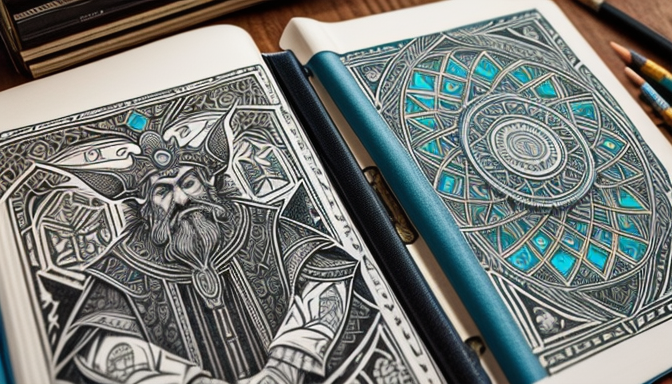When it comes to storytelling, characters are the heartbeat of your narrative. They are not just figments of imagination; they are the vessels through which your audience experiences the journey. By mastering archetypes, you can elevate your character game to a whole new level. Think of archetypes as the building blocks of character development, essential for crafting compelling figures that resonate with readers. Each archetype carries its own set of traits, motivations, and conflicts, making it easier to create rich backstories that enhance the narrative.
Imagine your protagonist as the classic hero archetype. This character is not just brave; they often face internal and external struggles that make their journey relatable. By layering in elements like alignment traits—such as being altruistic or morally ambiguous—you start to build a multi-dimensional character. Add in some mythological influences, and suddenly, your hero is not just a character; they become a symbol of hope or resilience, drawing the audience in.
But how do you ensure your characters are not mere clichés? The key is to combine archetypes. For instance, your hero could also embody the mentor archetype, guiding others while grappling with their own flaws. This duality creates intrigue and depth, making your characters memorable. So, as you embark on your storytelling adventure, remember that by mastering archetypes, you’re not just creating characters; you’re crafting experiences that linger long after the last page is turned.
The Importance of Archetypes in Storytelling
Understanding archetypes is crucial for writers, as they provide a framework for building complex characters that drive narratives and engage audiences on a deeper emotional level. Think of archetypes as the building blocks of storytelling—they’re not just templates; they’re the foundational elements that help shape your characters into memorable figures. Without these archetypes, characters can often feel flat or disconnected from the audience.
When you delve into the world of archetypes, you’ll discover a treasure trove of possibilities. Each archetype comes with its own set of rich backstories, alignment traits, and mythological influences that can elevate your character development. For instance, consider the Hero, who embodies courage and determination. This archetype can resonate with readers, allowing them to see themselves in the character’s journey. On the flip side, the Shadow archetype, representing the darker aspects of the human psyche, can create tension and conflict that drives the story forward.
Moreover, incorporating archetypes helps your audience connect with characters on an emotional level. When readers can recognize familiar traits, it fosters a sense of relatability. To illustrate this point, let’s take a look at a few common archetypes:
| Archetype | Description |
|---|---|
| Hero | Represents courage and the pursuit of goals. |
| Mentor | Offers guidance and wisdom to the Hero. |
| Trickster | Challenges norms and creates chaos, often leading to growth. |
In summary, archetypes are essential in crafting compelling characters that not only drive the narrative but also resonate deeply with your audience. By understanding and utilizing these archetypes, you can create a rich tapestry of characters that enhance your storytelling and keep readers coming back for more.

How to Effectively Use Archetypes
When it comes to crafting unforgettable characters, archetypes serve as your secret weapon. Think of them as the building blocks of storytelling, allowing you to create characters that not only captivate but also resonate with your audience on a profound level. To effectively utilize archetypes, it’s essential to develop compelling backstories that breathe life into your characters. A well-rounded character isn’t just a face in the crowd; they have dreams, fears, and experiences that shape their actions and decisions.
Consider the classic archetypes like the Hero, the Mentor, or the Trickster. Each of these roles comes with inherent traits that can guide your character’s journey. For instance, a Hero might be courageous and selfless, while a Mentor could be wise yet flawed. By aligning your character’s traits with these archetypes, you create a framework that helps them grow throughout the story. But remember, it’s not just about fitting them into a mold; it’s about adding depth and complexity.
Moreover, integrating mythological influences can elevate your characters even further. These timeless stories carry universal themes that can make your characters feel relatable and significant. For example, if your character embodies the archetype of the Hero, consider drawing inspiration from mythological figures like Hercules or Odysseus. This connection can enrich your narrative and give your audience a sense of familiarity.
In summary, when you weave together rich backstories, alignment traits, and mythological influences, you transform simple archetypes into dynamic characters that leap off the page. So, the next time you sit down to write, ask yourself: how can I take this archetype and make it truly unforgettable?
Frequently Asked Questions
- What are archetypes?
Archetypes are universal symbols or character types that represent fundamental human experiences. Think of them as the building blocks of storytelling, like the hero, the mentor, or the villain. They help create relatable characters that resonate with audiences.
- Why should I use archetypes in my writing?
Using archetypes can add depth and familiarity to your characters. They serve as a guide for character development, ensuring that your characters are not only engaging but also contribute to the overall narrative effectively. It’s like having a map while exploring uncharted territory!
- Can I create unique characters using archetypes?
Absolutely! While archetypes provide a framework, you can infuse them with unique traits, backgrounds, and motivations. This combination allows you to craft characters that feel fresh and original, even if they share archetypal qualities.
- How do I avoid clichés when using archetypes?
To steer clear of clichés, focus on developing your characters’ individual backstories and motivations. Add quirks, flaws, or unexpected traits that make them stand out. Remember, it’s all about adding layers to your archetypal foundation!

Recent Comments